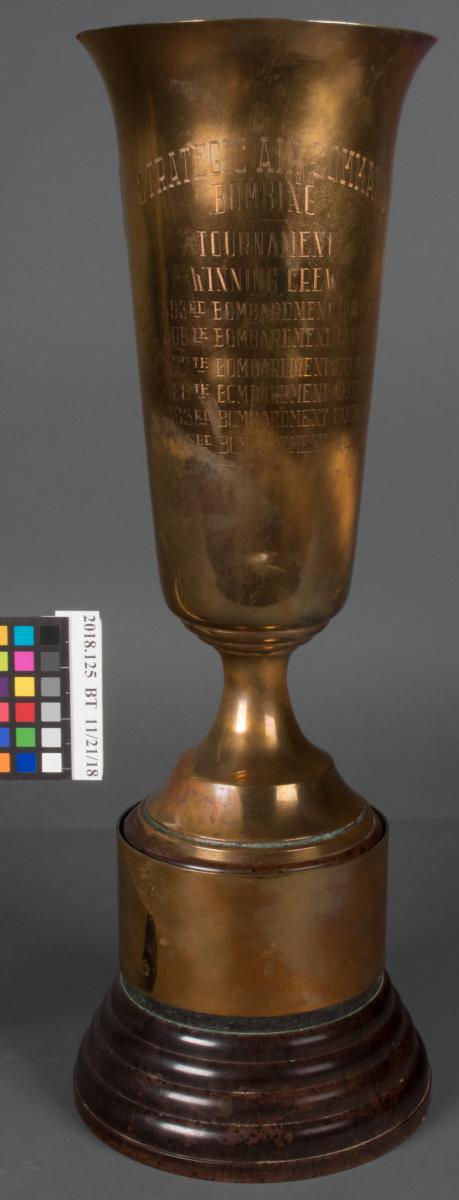During World War II, the US Army Air Force would practice bombing runs in preparation for battle. They had designated bombing ranges where pilots could drop the bombs at a safe distance. Unfortunately, one Nebraska town learned the hard way that practice does not always make perfect. In the wee hours of August 16, 1943, a practice bombing run dropped six bombs on Tarnov, NE, mistaking the town lights for the bombing range. Thankfully no one was injured. You can read more about the incident on the History Nebraska Blog here and a first-person account from the Columbus Telegram here.
When the war was over, Strategic Air Command began running bombing competitions to motivate crews and improve accuracy. This tournament, commonly referred to as “Bomb Comp”, grew in size and complexity and eventually included other events such as aerial refilling, navigation, and loading of munitions. In October, 1949, the second tournament was held at Davis-Monthan Air Force Base in Arizona. That year, the Bombing Proficiency Trophy went to the 28th Bomb Group from Rapid City Air Force Base in South Dakota, flying the B-36. We don’t know what happened to the trophy in the intervening years, but it eventually ended up in a yard sale and was purchased by a senior official and gifted to Strategic Air Command. The History Office at SAC saw that the trophy was in need of some care and brought it to the Ford Center for treatment.

Bombing Trophy Before Treatment
The trophy was in fair condition when it was brought in. The surface is heavily discolored overall from fingerprints, streaks, discoloration, and some areas of thicker corrosion. There were numerous scratches over the exterior copper alloy surfaces of the trophy that appeared to be from prior polishing of the surface. When the trophy was examined under ultra-violet light , it revealed that the majority of a past coating had been removed due to polishing of the exterior surfaces. There are also a variety of additional scratches and nicks associated with use and general wear of the surface.
To treat the trophy, it was disassembled. Remnants of the old protective coating were removed with tested solvents. Corrosion products were reduced overall with abrasives, and thicker areas of encrusted corrosion around the trophy’s foot and base were further reduced with a combination of mechanical methods. These methods included scalpels, bamboo skewers and the use of air driven plastic media. Remaining dark spots and fingerprint induced corrosion were further reduced to the extent possible using a chemical solution. This was carefully dotted on to the worst dark spots, and then thoroughly rinsed. It was not possible to completely reduce all of the corrosion products using this method without compromising the surrounding surfaces. A chemical corrosion inhibitor was applied to copper alloy surfaces, and rinsed, twice on areas of stubborn corrosion.
During treatment, the most of the top of the trophy on the left has been polished, with the base unpolished.
After chemically drying and degreasing the metal surfaces, two coats of lacquer were applied to all the copper alloy surfaces and when that was thoroughly dry, a top coat of paste wax was applied and buffed to improve handling qualities and provide extra protection for the lacquer coating.

Bombing Trophy After Treatment
Finally, the components of the trophy were reassembled and a new custom box was made to provide safe transportation and storage.
Custom-Made Storage and Transportation Box for the Trophy
Special thanks to Karen E. Miller, Ph.D, the director at SAC History Office for information about the trophy. Additional sources from SAC Bomb Comp – History Chronology and Factoids by Lane Callaway.



